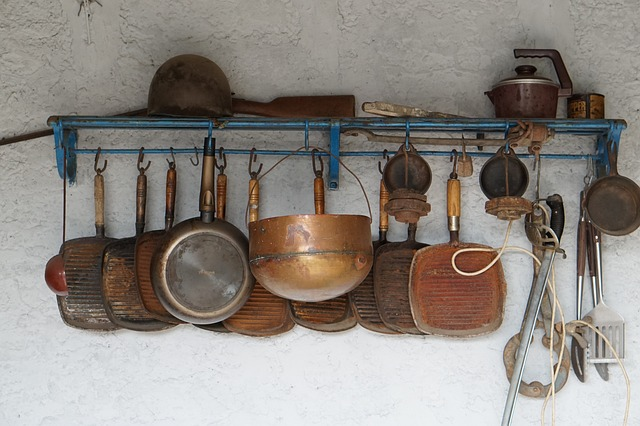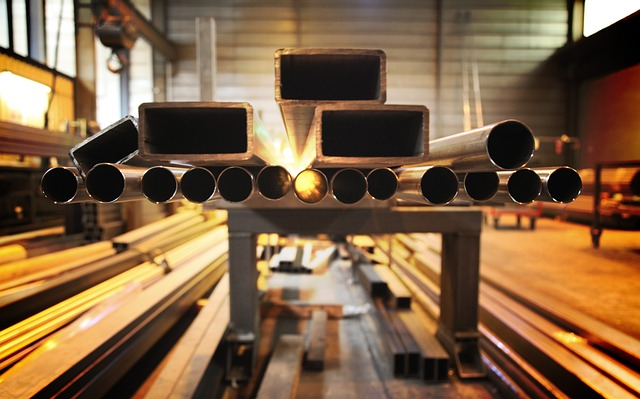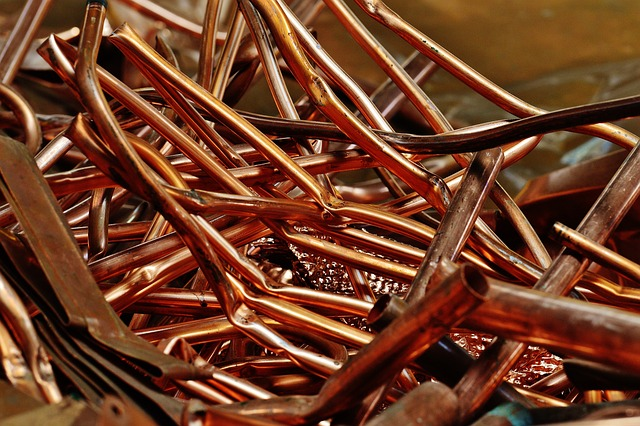als.Have you ever wondered how cast iron cookware works in an induction cooker? It is because of magnets.
To answer your curiosity, yes. They are made of a magnetic material.
In general, irons are magnetic materials. All cast iron types, grey cast iron, nodular cast iron, or white cast iron, don’t have differences when it comes to their magnetic permeability. Their only difference from regular iron is it is made with extra carbon atoms.
However, if you compare cast iron to regular iron, it may attract a strong magnet. This is because the crystalline structure of cast iron possesses different grains than a regular one.
The majority of irons are attracted to magnets. But its content and some specific circumstances may affect its reaction to magnetic fields. When cast iron is made with manganese alloy, it does not react to magnets. The manganese content balances the electrons found in this type of cast iron.
Why is cast iron magnetic? Here is some helpful information about magnets and cast iron.
Magnets and What are They Made of
Magnets are part of a person’s daily life. It is used in fans, high-speed trains, speakers, and many others. A magnet is produced with opposite poles, which produce magnetic fields, and attracts certain metals. The poles will either attract or repel a certain object.
These are made with different metals, such as nickel, cobalt, and some alloying elements, through the process of polarization. These metals acquire their magnetic properties from an available magnetic field. Industries and individuals may use different kinds of magnets, namely:
Electromagnets
These are magnets that work only in the presence of a magnetic field created by electricity, hence the name. Electromagnets are usually used in induction cookers, magnetic door locks, medical machines, desktops, and many others.
Permanent Magnets
The magnets that are used daily are artificial magnets and designed as permanent since their magnetic properties should not decrease. Usually, these are neodymium magnets, alnico, and samarium cobalt. Permanent magnets are found in motors, generators, and accelerators.
Temporary Magnets
A temporary magnet has a very minimal difference from a permanent magnet. They only produce magnetic force when there is an available permanent magnetic field. If there is none, they don’t possess any magnetic property and will not be attracted to metals.

Cast Iron: Definition, Content, and Application
Cast iron is a product of metals such as an alloy of iron, carbon steel, silicon, and some others. These are made by remelting, molding, and hardening for different uses.
It comes in different types, but the most common are grey cast iron and white cast iron. This metal is used as a part of materials in manufacturing cast iron cookware, industrial needs, engine parts, gears, and other machines.
Aside from being cost-effective, cast iron is preferred by many because of its properties. It has a low melting point and is durable, which can function like other metals without spending too much on it. It is sometimes preferred to be used than pure iron because they are more ductile, stiffer, and has higher strength.
How Does it Become Magnetic
The magnetic characteristics of cast iron are numerous and may vary from one another. These are determined depending on the microstructure of the cast iron. The electron-electron interaction gives cast iron its magnetic properties. It becomes ferromagnetic if it has a high iron content.
The cast iron structure is altered by alloying elements to provide magnetic properties. Coercive force, magnetic field strength, carbide carbon, hysteresis loss, and magnetic permeability are among them.
How it Reacts With Magnets
Cast irons react to an open magnetic field because of their magnetic permeability.
Cast iron’s magnetic permeability is a function of The cast iron’s structure is composed of carbon atoms. However, its high permeability may differ on each type of cast iron. Malleable cast iron, ductile cast iron, and grey cast iron have different levels of permeability. This is because of the composition of molten iron ore and different metals during the casting process.
Cast Iron Magnetic Applications
You may be surprised that these can be found at home. Most commonly as specific machine parts, water and gas pipes, and even in kitchens as cookware.
Cast Iron Pipe
Want to know where a cast iron pipe magnetic used?
A cast iron pipe is usually used in home locations that need gas or water transmission. Usually, these are behind a household’s wall. Since these are usually hidden, it is easily located by using a magnet locator that can only detect and identify magnetic materials.
Cast Iron Cookware
Is cast iron cookware magnetic? Again, yes. Cast iron magnetic cookware is best used on induction stoves.
The induction stove transfers heat to cast iron pots through an electromagnetic current. This process generates a magnetic field that heats the cast iron pots. It can withstand heat treatment and get cold naturally without damaging its material.
However, it is important to keep the cast iron pot or a cast iron pan in good condition to keep its magnetic property. Its pure iron content makes it corrosive and prone to rusting. Due to this, it may lose its magnetic property eventually.
Preventing a Cast Iron Pan from Rusting

Rusting may affect the cast iron pan’s magnetic force. To prevent it from rusting, it should not be soaked in water for longer periods.
In cleaning, you can spray some water and use mild dish soap. It needs to be dried out quickly using a dish towel or a paper towel. Otherwise, it may perform a chemical reaction that will eventually be seen as rust.
It is also important to season it and keep it moist by applying a thin layer of oil. Seasoning the pan will also prevent acidic foods from causing rust in the cast iron.
Other Magnetic Metals

Knowing whether a metal is magnetic is crucial, especially when you are working on a project using it. The magnetic properties of pure iron, like those of steel, can be very helpful for drawing or repulsion of other materials.
However, you might want to steer clear of the cast iron magnetic properties in your project if you don’t want your materials to attract unnecessary magnetic forces. Ferrous metals can be magnetic if the crystalline structure of their atoms is arranged and are all in the same direction.
Working on a new project? Knowing which other metals are magnetic is crucial. It may cause differences or malfunctions in your projects if a magnetic force is present or absent.
Galvanized steel
Though galvanized steel has a zinc coating which is known to be non magnetic, it is mostly made with steel. The steel retains its magnetic property because the zinc is only applied in a thin layer to prevent rusting.
In general, steel is made with iron with additional contents of carbon. Since iron is magnetic, the magnetic property of galvanized steel will not be hindered.
Many people use galvanized steel for their projects because its zinc coating makes the steel rust-proof. However, keep in mind that this is still magnetic, so think twice if you will use it for electronic devices.
Stainless steel
Stainless steel is a common metal used in building sinks, cookware, handrails, building cladding, medical technology, and automotive parts. These are known to have good resistance to corrosion because of their chromium content.
Austenitic stainless steel is a type of stainless steel that is not attracted to magnets. This is because it possesses misaligned electrons. But there may be processes that can affect the austenitic stainless steel’s attraction to magnets.
Martensitic stainless steel is a type that retains its magnetic property. It means that there is more iron than chromium content.
Hot-Rolled Steel
This type of steel is formed from the hot rolling process. When it is under hot temperatures, it can be shaped to its needed shape. Manufacturers use hot-rolled steels for curved corners and edges.
As it cools, it becomes durable. Though its process involves extremely high temperatures, the magnetic property of the hot-rolled steel is still retained.
Cold-Rolled Steel
The process of making cold-rolled steel is almost the same as that of hot-rolled. Its only difference is that cold-rolled steel is re-rolled under room temperature to achieve a smoother surface and get the perfect dimensions needed. This steel may undergo more processes, such as polishing and grinding.
It has better aesthetics than the other one, and it is the better option for magnetic projects that need more accurate precision and a better appearance.
Wrought Iron
Wrought iron is the same as cast iron. It contains alloy and a very low carbon content but possesses good tensile strength and ductility. Because this metal is soft and can be reheated, it is best used for magnetic projects that need metal in various shapes.
It is also used for cast iron cookware. Which makes it suitable for induction sto
Non-Magnetic Metals
Copper

Copper is a diamagnetic metal. Its susceptibility to magnets is very low, and it will not have any reaction when exposed to a magnetic field. This metal is best to use for projects with high electrical conductivity.
Aluminum
Like copper, it also has low magnetic susceptibility. It exhibits paramagnetism which makes it suitable for bike frames, canned beverages, and other items that should not react with magnetic fields.
Conclusion
Knowing that cast iron is magnetic shall summarize this article. Its alloy and carbon content makes it magnetic. Cast iron possesses a good magnetic property that is beneficial, especially to a cast iron pan, a cast iron pipe, and other industrial parts and materi


